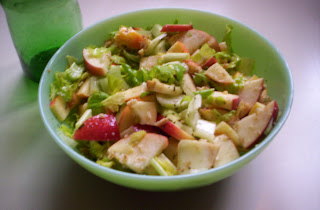
As if I didn't have enough to do to keep up with Daring Kitchen challenges, I decided I simply HAD to join this lovely group of bread bakers, Fresh From the Oven. If not, I might never get beyond mundane pan loaves. Already I've be very grateful for the nudges and the advice. Thanks, guys!
Whether you are a baker or not, please check out the recipe at this lovely blog,
The Fresh Loaf. I have to say it went more smoothly than I expected, but, also, the results were not exactly what I expected:
- The preferment (a dough base that uses a minimal amount of yeast to create a nice, slow, initial rise) came together for me like a charm. After mixing, I still had a bit of dry flour hanging out in the bottom of the bowl, so I gave the whole thing a couple quick kneads and it came together perfectly (lumpish but hydrated).
- In about 14 hours preferment was bubbly looking but pulled like taffy in chunks out of the bowl as I added it to the rest of the dough ingredients. I would put in 3 or 4 chunks, then give a couple quick kneads, then add a few more chunks. The two components incorporated beautifully, and working it by hand wasn't really any problem.
- Our humid Massachusetts weather must be perfect, because it rose right on schedule. I improvised the shaping into battards based on a few different instructions (especially Nick Malgieri in How to Bake). I decided to let the shaped loaves raise on a cookie sheet with cornmeal to prevent sticking. I tossed a cup of water into the bottom of the over as I slid the loaves in. Internal temperature (according to my instant read thermometer) reached 200 degrees just a minute or two shy of the 35 minute rough approximation from the recipe.
The results:
- Pretty tops, but the loaves merged into each other and kissed sides. No big deal, just not a perfect a final loaf. Next time I think I'll go for simple rounds. (Update: Corry had some great advice/ Why not just bake the loaves one at a time. An extra half hour of final rising isn't going to hurt anything.)
- Bottom of bread looks underdone! That cookie sheet really sucked some temperature off. Next time I've got to figure out a way to go directly on to my stone or preheat the sheet or something. It tastes fine, but it looks odd.
- I also think my instant read thermometer is a bit off. (I've noticed that roasts are a little less done than they should be, etc.) I'll have to add an extra 5 or 10 degrees for the target time, I think.
- The taste is nice and clean. (Didn't have a sour undertone from the preferment, at least not that I could taste.) The texture and grain have a nicer chew than the pan breads I usually make, but I was rather expecting a bigger difference there. I also thought th

e whole structure could have been a bit taller and stronger.
The rye four I used was stone ground. I wonder if that affected the texture some. Did it need something a little more fine grain to get a better chew/texture?
(Update: The bread improved with age! The next few days after first baking, the bread was at its best.)
Goals for future rustic loaves:- Experiment with flours
- Improving shaping technique
- Find optimal baking surface







